 English
English
 Deutsch
Deutsch
As part of our journey to Canada and the United States we also planned a trip into the path of totality of the 2017 eclipse.
We finally watched the event half way between Knoxville and Chattanooga in Tennessee. This spot was quite close to the centerline of the path.
We were extremely lucky on behalf of the weather conditions - only at the beginning (first contact) a few clouds disturbed the view, disappearing
after a few minutes. From that moment on, we enjoyed the whole eclipse in a clear sky.
The whole planning process was based on the interactive google map of Xavier Jubier.
It allowed an accurate identification of time frames and length of the eclipse along the complete shadow path. Regarding my positions the dates were as following:
| Position | 84° 33' 58.4" W, 35° 33' 04.7" N |
| First contact | 17:03:48.0 UT, 13:03:48.0 EDT |
| Second contact | 18:32:26.2 UT, 14:32:26.2 EDT |
| Middle of eclipse | 18:33:45.7 UT, 14:33:45.7 EDT |
| Third contact | 18:35:05.0 UT, 14:35:05.0 EDT |
| Fourth contact | 19:58:31.2 UT, 15:58:31.2 EDT |
| Duration of totality | 2m 38.9 s |
| Size of eclipse | 1.01494 |
| Altitude of the sun | 64.9 ° / 63.5 ° / 51.0 ° (begin / middle / end) |
Almost the complete amount of pictures was composed into a time lapse movie, which shows the sequence in a very impressive way:
Play video with external player or download (900x675, avi-format, 1.1 MB)
You'll find 12 images of the entry phase. All images of partial phase.
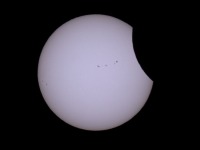
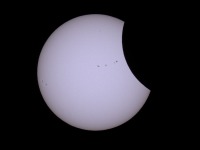
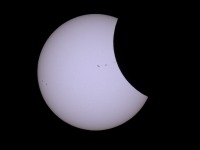
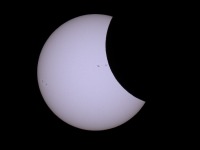
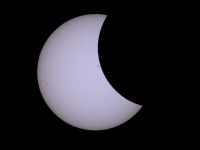
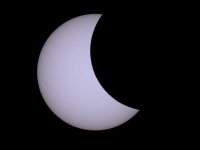
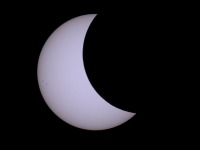
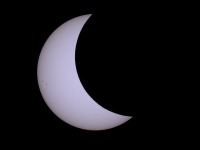
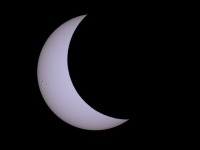
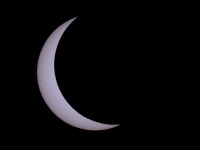
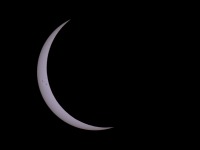
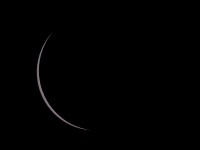
First of all, some spectacular images in high-res:
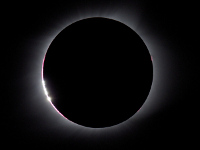
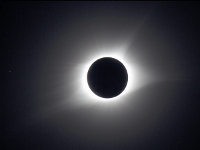
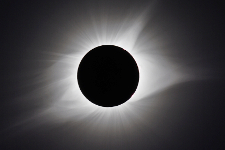
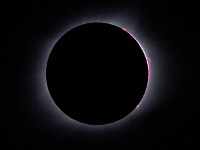
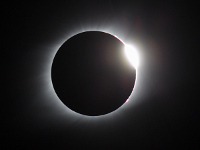
All images in chronological order:
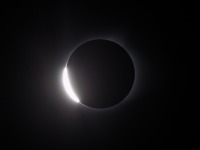
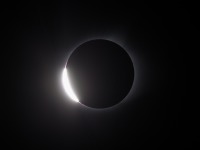
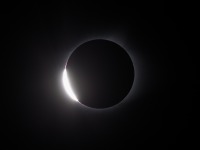
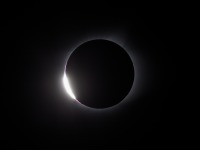
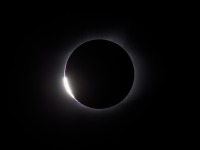
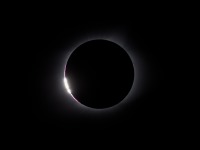
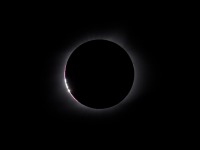
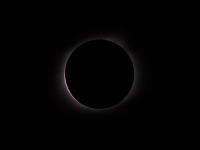
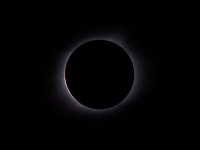
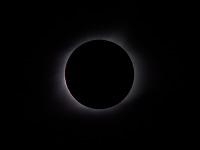
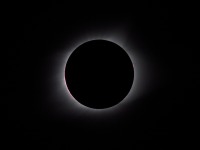
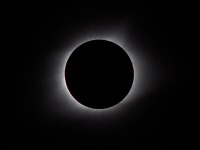
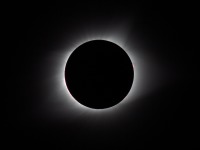
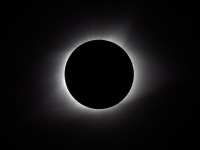
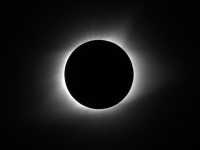
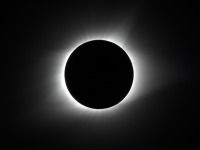
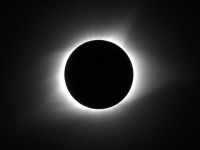
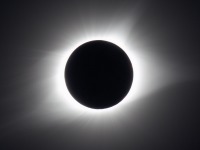
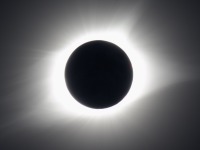
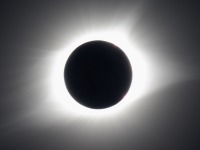
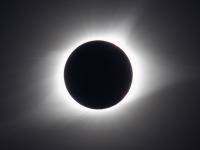
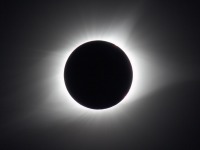
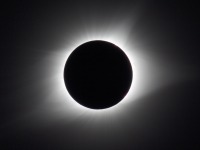
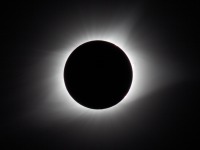
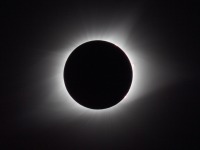
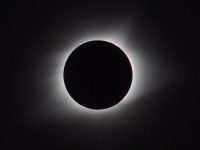
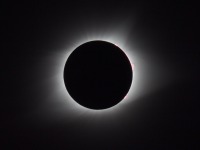
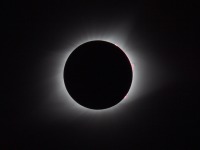
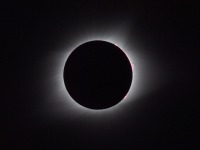
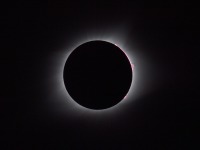
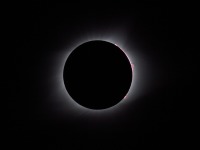
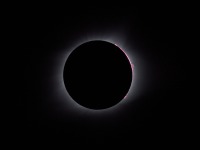
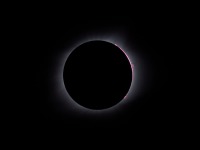
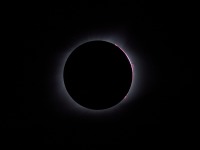
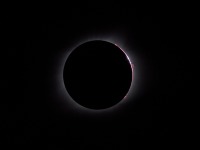
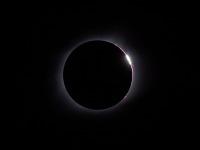
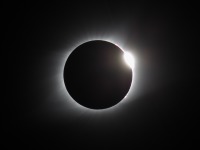
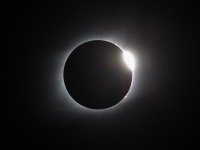
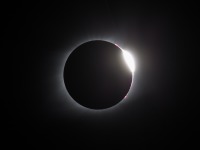
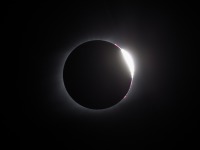
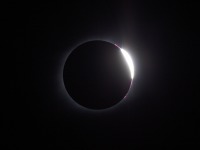
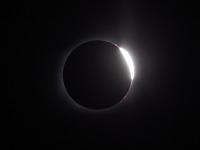
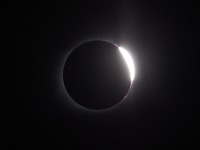
You'll find 14 images of the exit phase. All images of exit phase.
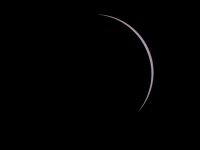
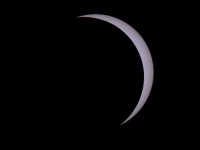
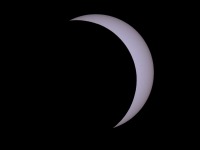
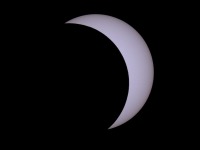
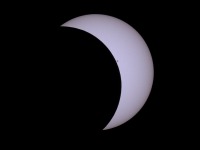
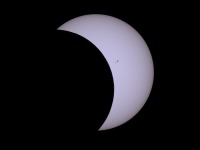
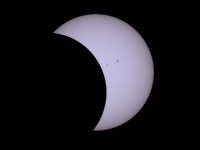
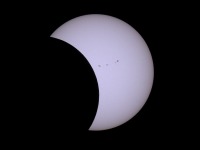

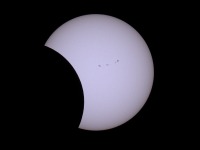
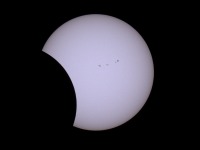
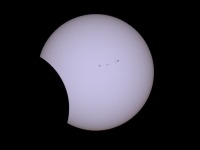
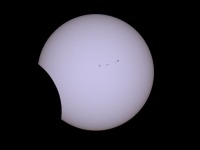
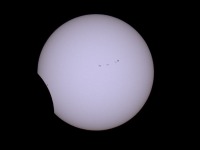
The recording of the eclipse went fully automatically. The camera was controlled by a notebook with a software Eclipse Orchestrator on it.
The free version of the software was sufficient for my purpose. The preparation of the series of recordings was very time consuming. First of all I had to become familiar with the software. The hardest task was the draft and testing of the recording series' script.
Each single photo of the totality phase had to be programmed for its own. Indications for that could be found in the basis script which was part of the software package. It was very important to identify the minimum possible time lag between two pictures.
Saving a raw image requires round about 18 MB on the memory card. I figured out that a two seconds gap puts me on the safe side. Especially during beginning and end of totality (diamond ring, prominences) mean quick changes and many recordings within a short period are necessary.
The only manual actions were the handling of the sun filter shortly before and after totality. 20 minutes ahead of the totality I changed the camera's battery and refocused once more. It turned out, that this was the best thing to do, as the focus was more accurate than at the beginning of the eclipse.
First of all, the recorded raw images were edited by RawTherapee. This included:
After that, each image is sized with 104 MB! The next step of the process was the centring of the images to make a time lapse video out of them. Unfortunately, this couldn't be done automatically, so I had to centre all pictures by hand with
Fitswork. Doing it that way, the colour depth remained unchanged. The time lapse video was created with ffmpeg:
Command line: ffmpeg -r 3 -i sofiz_%04d.tif -vf crop=2760:2070:1212:770,scale=900:675 -b:v 1000k sofi.avi
By converting automatically the single frames were created in a loop by convert command from ImageMagick:
Command line: for ((i=1;i<=91;i++)) ; do j=`printf "%04d" $i`; convert sofiz_$j.tif -crop 1600x1200+1810+1220 -scale 900x675 -quality 0 sofizc_$j.jpg; done
The observation point was located in Acme Mill, Union Groove Rd., next to exit 56 off Interstate-75 South in Tenessee.
Weather:
Weather forecast predicted "partly cloudy skies" for the 21st of August, including a cloud cover of up to 39 percent. Not the best prospects! Surprisingly, during forenoon of the 21st, the skies were clear up to 12:45 p.m.
A few minutes before the beginning of the eclipse the sun suddenly was covered by some clouds, which disappeared after 20 minutes - what a relief! At noon, the air got hot, up to 33 °C, but it felt like 45 °C.
Many people got into their cars and started the engines to run the air condition. Even the notebook heated up to a degree that you risk to burn your hand when touching it. Thanks to the eclipse, the temperature went down and the air got cooler,
what a nice side effect! Skies kept clear until the end of the eclipse.
Photographic observation:
Additional equipment for visual observation:
Note: The links should be seen just as examples, I own some of the parts for a long time and some of them are bought second hand.
You'll find many pictures of the observation point which also show the equipment in use. It was a significant challenge to transport the equipment safely during our flight.
So I had to disassemble the tripod completely to make it fit into our suitcase. The mount was secured with large amounts of bubble foil and foam material. On top of that,
the suitcase was enforced by two thin fibre boards. One of them was used to stabilize the mount furthermore with straps to keep it stable and to maintain the centre of gravity of the suitcase.
Airline regularities demand to transport Lithium batteries as part of the hand luggage, which means to put the Powertank in the backpack. Security control, being suspicious about that item,
send it through the scanner a second time, but finally let it pass. Flying back from Toronto, we had no problems. The equipment weathered the journey very well and nothing got lost - fortunately!
On the eve of eclipse, we drove over to the observation spot to explore it and to adjust the mount's elevation of R.A. axis. This can only be done during the polar star's visibility.
We were delighted to see how easily this public place can be attended, and that already some fellow spectators of the eclipse were present. At dawn, I set up my mount.
In general, it is said that the western states of Oregon, Idaho and Wyoming are privileged on behalf of the weather.
Coming from Toronto, you barley could reach these states by car. Travelling that way, you only can reach Missouri,
Illinois, Kentucky, Tennessee, North and South Carolina. The more you go east, the more likely it is that you will encounter
bad weather conditions. Initially, I choose the Southern Illinois University (SIU) in Carbondale as observation spot,
because of the fact that the eclipse reaches its maximum length and size at this point. This meant 1.400 km of travelling.
By changing our plans and aiming at a place southwest of Knoxville, Tennessee, in McMinn County, we saved almost 400 kilometres.
We were lucky enough to find even an accommodation in the outskirts of Knoxville, which means an only one hour's driving
to the final observation place. Weather forecast for both spots - Carbondale and Knoxville - said "partly cloudy",
we had no particular reason to stick to the original Carbondale plan. Anyway, local media expected a rush of more than
70.000 visitors
for Carbondale and feared a
grid lock
ahead and after the event. Even NASA was planning to
broadcast from Carbondale.
Well, lucky for us that we didn't join those - in the moment of totality
clouds covered
the sky above Carbondale.
Travelling to Knoxville we saw signs alongside of Interstate-75, saying that parking on shoulders is not allowed during eclipse. Other signs invited people to exit the Interstate and join eclipse enthusiasts on parking lots alongside the interstate.
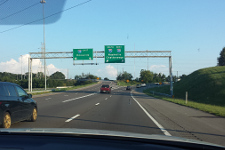
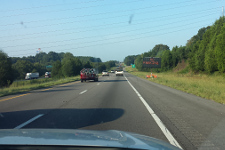
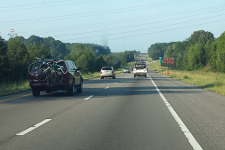
During exit phase of the eclipse the news emerged, that there's an immense traffic jam on Interstate-75 North and on all
side roads. Later, the same was said about the southern directions. All lanes closed, so to say. As we stayed until the end of the eclipse
(what not many people did), erroneously, we hoped to get away without traffic jam, which turned out to be wrong.
Obviously, half of the American population and a whole lot of other nations travelled south to see the eclipse and now
congested all ways north. So it took us several hours only to get back to greater Knoxville area, where we finally
searched a motel room and laid down after an extremely exciting and fascinating experience - the great American eclipse of August 21st 2017.
[ Last update: 07/21/2018 |  Gregor Krannich
| Gregors astronomy page ]
Gregor Krannich
| Gregors astronomy page ]